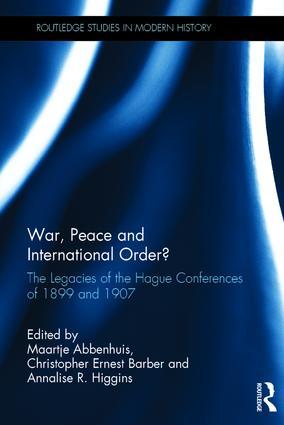For centuries violent wars had raged in Europe. Harvests were destroyed, houses were plundered, families torn apart. Society was unsettled time and again. The raw images of the battlefield that through the invention of photography now also reached the home front, did serious damage to the idea that war was essential for defending the glory of king and country. And so, in the course of the 19th century, the peace ideal blossomed as never before. The political tensions and resulting threat of war on the threshold of the 20th century only added to the popularity of the spreading peace movement. Throughout Europe and America peace organizations were founded, inspired by the ideas of famous writers and pacifists such as Leo Tolstoy, Bertha von Suttner and Alfred Nobel.
Book Review
The initiative of Czar Nicholas II to organize an international peace conference came at exactly the right moment. During the First Hague Peace Conference of 1899, 26 countries came together to speak about disarmament and about the possibility of international jurisdiction, which led to the establishment of the Permanent Court of Arbitration. In 1907 a second peace conference was organized in The Hague, in which 44 countries participated.
This volume brings together some of the latest scholarship on the legacies of the Hague peace conferences in a comprehensive volume, drawing together an international team of contributors. The exact legacies of the two Hague peace conferences remain unclear. For contemporaries, the Hague conferences were controversial events. The fear that the results of these conferences, the 1899 and 1907 Hague conventions, might limit States' sovereignty, compelled them to ignore or limit their application. Diplomatic and military historians, who cast their gaze to 1914, traditionally dismiss the events of 1899 and 1907 as insignificant footnotes on the path to the First World War. On the other, many internationalists, peace activists en international lawyers welcomed the conferences with enthousiasm. Experts in international law posit that The Hague’s foremost legacy lies in the manner in which the conferences progressed the law of war and the concept and application of international justice: they set a notable precedent for the future of international organisation as well as for the rise of international judicials forums.
This book attempts to assess the history and on-going relevance of the Hague conferences, the conventions they brought into being, the institutions they established and the precedents they set. The fact that the Hague system became a permanent development after 1907 is easilly forgotten. A third peace conference was planned for 1915. Unfortunately, the events of the First World War overtook the proposed event and an official Hague peace conference was never held, despite several attempts. After 1918, a new age of collective security based on the League of Nations' mandate seemed to overshadow the Hague conferences' promise for the judicial and international organisation of the world. Yet, The Hague's influence continued to radiate. The Permanent Court of Arbitration remained in session. The Permanent Court of International Justice, established in 1920, evolved into the International Court of Justice in the aftermath of the Second World War. Both courts still reside in The Hague, accomodated within the Peace Palace. The city of The Hague also continues to revel its connections to the 1899 and 1907 conferences, as more than 160 international organisations are housed within its boundaries. The chapters of this book all highlight how essential The Hague has been - and continues to be - to the development of international law and in the pursuit of peace.
As noted in the introduction (page 5), the chapters of the book do not offer a comprehensive history of the conferences nor do they narrate all historical and contemporary applications. To access those, readers must look elsewhere. Our suggestion would be: the PPL online catalogue! What the chapters do attempt is to highlight how relevant the Hague conferences are to shaping the history of the modern world.
